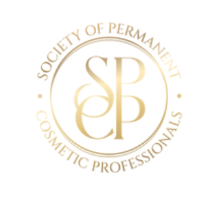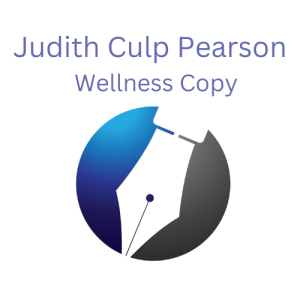
Over the decades, women have tried a lot of “new” ingredients to make their skin look and feel better. Hemp-derived products are just the latest in this group. In 2019 CBD was the most popular ingredient in the beauty sector.
It’s a huge market. In the US in 2018 skincare topped $5.6 billion in sales. Globally revenues were over $135 billion. And that’s just skincare.
The beauty sector globally topped $300 billion and is expected to keep growing. In 2018 skincare grew by 13%. Makeup, normally the queen of growth, only managed 1%.
The growth and focus have shifted for two key reasons. Gen Z and millennials are very natural focused. Second, the number of people with very sensitive skin just keeps exploding. Hectic stressed lives throw our systems out of balance. The use or overuse of the wrong products makes it worse.
When anything is out of balance…skin, especially your face, is the first place it shows up.
As a working esthetician, I know sensitive skins are far more common than twenty years ago. I could probably come up with a shopping list of possible causes, but the bottom line is they need specialized skincare.
In the last 15 years, the availability of simple formulations has exploded. Many developed by those with a skin problem that they couldn’t find an answer for. Social media helped them share their stories and solutions with consumers.
Table of Contents
A few months ago, a friend developed shingles on her face. A nasty painful rash that made her feel awful about herself, on top of having to deal with the virus.
Shingles is a chemical burn from the inside out that leaves the skin in a hyper-sensitized state. Cold compresses work. Most other things just fire up the irritated nerves. A soothing antiseptic gel calmed the rash, but when the scabs form, she needed something more protective.
I finally located a simple formulation that had the antiseptic gel, a soothing hydrator, and CBD with no stimulating ingredients. It did the trick, protecting the skin while it tried to heal, even calming the angry nerve endings. It was the only thing outside of water she could use for over two months.
As she moved into her third month, we tested a very calming botanical blend developed by a doctor known for his research into problem skins.
The botanical serum and calming protective cream were her silver bullet. Her skin is healing. She still supports those two products with some of the CBD infused cream as needed. But she is moving forward.
It’s no secret that there have been a number of companies making false promises both about their formulation and what it will do.
They’ve had a negative impact on consumer perceptions about hemp and CBD. People buy solutions and if those solutions let them down, they get fearful.
But those companies are also getting the attention of the FDA. In 2019 the FDA sent letters to over twenty companies who were not following cosmetic and supplement guidelines about not making health claims.
More are sure to follow. But it’s not the sort of attention a business wants.
This sort of thing is probably to be expected in a niche where growth has exploded like wildfire. There will always be those who put profits first. But they won’t last.
On the upside, with all the media attention there are few people left in the USA who haven’t at least heard of CBD. They’ve heard the claims. Now they are trying to sort out fact from fiction.
Smart, educated consumers aren’t ready to abandon CBD just because of a few bad marketing decisions. But they have gotten more suspicious and selective.
Fortunately, we’ve had many in the industry who have focused on creating quality products. They led the way with testing, validation, and certification. They are transparent and proudly post their test results where customers can easily access them.
These actions build trust and these companies will be around for years to come.
They focus on products that perform as anticipated. Who wants to buy something that doesn’t work? If we buy a relief balm, we expect to get relief. If we buy a calming product, topical or oral, we expect something to calm down.
The results speak loudly.
Quality, standards, and results have catapulted companies to national recognition as industry leaders. It has also netted them astronomical growth and sales.
Many great ingredients that were superstars in their day. Think Aloe Vera. It may not be as popular as 20 years ago but it still enjoys broad use because of the properties aloe brings to the formulation.
CBD has been associated with properties that benefit wellness for thousands of years. But we are just learning about the full spectrum of over 100 different cannabinoids.
And researchers and chemists are just scratching the surface to document what has been experienced.
It is the properties of any plant that make us want to use it. Many of these have been anecdotally attributed over time. Science validates this. Antiseptic, antibacterial, anti-inflammatory, and antioxidant properties have all been observed with CBD.
These properties formulated in skin-issue targeted formulas are key to growth and happy users.
A generic good-for-everyone facial skincare product will have today’s educated and sophisticated user shaking their head. They want to know the product is formulated to solve their personal needs.
One thing women don’t want? To smell like “weed.” We don’t want to smell like a forest or dirt. Make it look nice, feel nice, smell nice and work.
The term natural has been thrown around for years. It’s still doesn’t have a uniform definition. Many consumers think of plants as natural…non-chemical. But even water is a chemical by definition.
And while plants are considered natural, that doesn’t mean they are automatically safe. Foxglove is natural, but you don’t want to mess with it in its botanical state. You’d also avoid poison oak, sumac or ivy.
What consumers are looking for is products free of toxins and contaminants like pesticides. This is even more important with botanicals like hemp that detoxify the soil, sucking up the toxins. Organic certified is a bonus as well as the assayed test results to show it is toxin-free.
Women are looking for a product that is safe for their particular beauty need and won’t cause skin reactions.
CBD beauty products sit right at these crossroads of natural wellness and beauty. But they need to be targeted to needs.
If you’re creating a product for blemishes or problem skin, there are ingredients you will want to include and exclude. Ingredients that might be perfect for a dry maturing skin won’t work for an oily, problem skin. The reverse is also true. Skin issues need their own targeted solution for maximum results.
From the get-go, a customer-centric experience that helps them progress through their buying journey is going to increase sales.
Women want it easy. They want your website to be user-friendly. She wants to find educational content to answer her questions so she feels confident if she has never tried CBD before. She wants to feel her transaction will be safe and secure.
In Oregon, where dispensaries are literally on every corner, some are finding investing time in consumer education is the key to differentiate themselves from the competition.
Make your website their go-to resource for information they can trust. Provide a guide that walks them from understanding to choosing and buying.
If you have both a website and a retail outlet, help visitors with a smooth, integrated experience. Finding you, learning from you, buying and or visiting.
Inspire them. As they move through their buying journey, help them find what they need via suggestions based on what they’ve looked at.
Your buyers are active on social media. It only makes sense to be where they are. You can’t do paid ads for CBD products, (at least not at this time,) but you can share.
User-generated content dominates your marketing abilities on social media channels.
Informational blurbs, video snippets, photos of products in action, success stories. Cultivate and capitalize on your best customers.
Micro-influencers are very powerful in the world of beauty. They are your best customers and their value can’t be over-estimated.
Invite them to share and post. Get them telling and posting their stories. Engage them in conversations. Recognize and reward them.
There are lots of websites out there where the last blog article was 6, 12 or even 24 months ago. Some Facebook pages have scattered to no posts. You need regularity.
Lack of content makes you invisible. Search engines love new current information. So do your visitors.
If you walked into a store to buy something and all the counters and products were covered with a thick layer of neglect-dust, would you stay?
The same thing happens on your website.
New, updated content or posts catch the attention of both search engines and customers.
It’s really all about quality and regularity. Quality product, quality information, quality support, and quality customer TLC. Regularity in content, social posting, and customer interaction.
Stuck? Not enough hands to juggle all the need-to-dos, let’s talk and simplify your life. [email protected].
 Judith Culp Pearson receives three top honors
Judith Culp Pearson receives three top honors
at the annual Society of Permanent Cosmetic Professionals in
Ft. Worth, Texas - October 7-9, 2023




